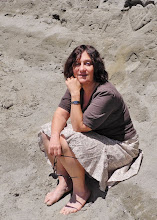Although I'm unfamiliar with this young French conductor, and have not yet attended a performance of his with Seattle Symphony as yet, I certainly hope he will prove to be just what this local community has long awaited. Born in Lyons, France, 36-year-old Mr. Morlot studied violin at the University of Montreal and conducting at the Royal Academy of Music in London. He is sought after as a guest conductor, having appeared with Chicago Symphony, Boston Symphony and New York Philharmonic, among a long list of others. Morlot has been recognized as a "leader with a clear beat and precise ear" by New Yorker critic Alex Ross, acclaimed author of the book and blog "The Rest is Noise." Speaking as a violinist, I can appreciate a conductor who has intrinsic knowledge of string playing; articulations and phrasing might, for a change, become more natural and less forced. Wouldn't it be wonderful if an era of dot dash could be replaced with inspired phrasing, natural musicality, and originality?
Of course, the Seattle Symphony, like many other American arts organizations, has a strong desire to establish more of an international presence. A European conductor is often perceived as a catalyst for growth and opportunities abroad, such as touring. But these are troubled economic times, with ticket revenue and corporate donations down, as well as shrunken endowments. Boardrooms tend to be petri dishes for bad behavior. Ludovic Morlot has never had an orchestra of his own thus far, therefore, he will need to prove himself in this local community by cultivating his own pool of followers and donors. Morlot and his family will relocate to Seattle; a local presence might be helpful, although I think it's fair to surmise that every honeymoon period is short-lived, and Seattle has a tradition of dragging its feet when it comes to new leadership.
Music directors of American orchestras must dedicate an inordinate amount of time to fund-raising efforts. And, during this period of slow economic recovery, no matter what Michael Kaiser, the impassioned President of the Kennedy Center and arts organization guru touts in terms of turnaround technique, Morlot is taking the helm of Seattle Symphony at one of the most daunting episodes in recent history. I wish Ludovic Morlot and my colleagues bonne chance. Time is of the essence for a turn around. If there's a slush fund out there for lame-duck conductors, now might be the time to dip into it.
photo of Ludovic Morlot by Maike Schulz 2006



